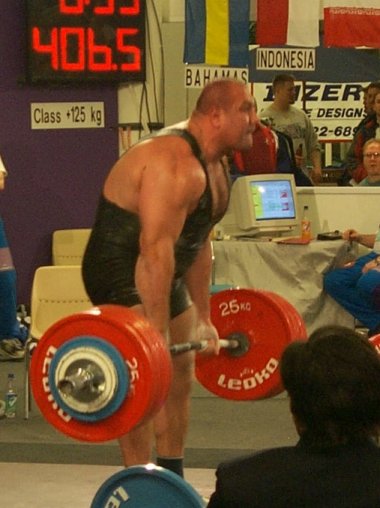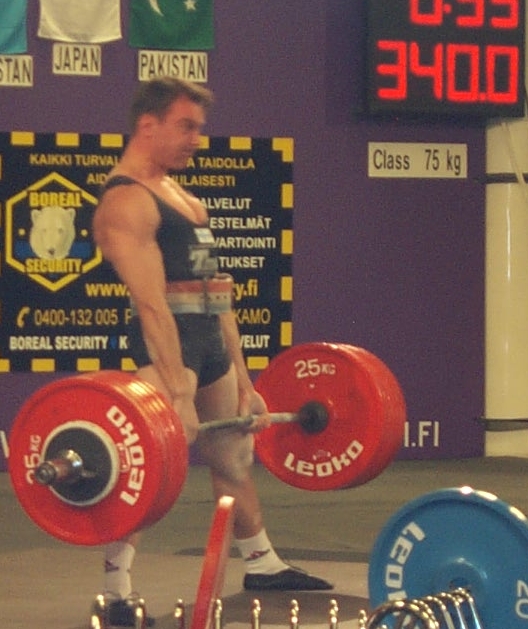








The Deadlift is a very simple exercise but works several muscle groups and is very effective in building strength. It is similar to the Squat except that the weight is lifted from the floor.
Start out with the weights on the floor and the feet anywhere from shoulder width apart to twice shoulder width apart (whichever you find more effective). With the back flat and rigid and the head pointed upward, bend at the knees and lift the weights up to standing position. Be careful not to bend your back too much, it could easily cause an injury. The deadlift is a dangerous lift and should only be done if you have no history of back problems.
The Physics of the Deadlift
Like the Bench Press and Squat, the reason the Deadlift is so effective to because of gravity. And also like the squat and deadlift, the lifter does work when lifting the weights.
Now we will talk about the all important physical concept of Conservation of Energy. Energy can be defined the capacity an object has for performing work. The law of conservation of energy states:
Energy can neither be created or destroyed. Energy may be transformed from one from to another, but the total energy of an isolated system is always constant.
There are many different kinds of energy, such as thermal energy(heat), nuclear energy, etc. The two kinds we will be concerned with are the gravitational potential energy and kinetic energy. Gravitational potential energy U can be defined as the product of the magnitude of the of gravitational force mg acting on an object and the height y of the object or in equation form:
U = mgy
Kinetic energy K is the energy of motion. It can be defined by the equation:
K = (1/2)MV^2
The total mechanical energy E of a system is defined as the sum of all the potential and kinetic energies, so:
E = K + U = (1/2)MV^2 + mgy
If energy is conserved in a system, the total initial energy must equal the total final energy, so:
Ki + Ui = Kf + Uf
 (www.powerlifting-ipf.com
(www.powerlifting-ipf.com
Let's put this law to work in the deadlift. Say the lifter in the picture is going to lift a mass of 350 kg to a height of a little over 2 meters. If energy is conserved in the system, and the lifter starts from rest, what is the velocity of the bar right before the weight reaches the top?
To do this problem, we have to assume that the velocity of the bar is constant. If the bar starts from rest, initial potential energy is 0 because y = 0. Initial kinetic energy is also 0 because the weight starts from rest. So the equation to find the final velocity is:
0 = (1/2)MV^2 + mgy
v^2 = 2gy
v = 6.26 m/s
The velocity of the bar right before it gets to the top is 6.26 meters per second. This however, is only accurate because we assumed that energy was conserved in the system. In real life we would have to account for energy lost to heat and chemical energy from the lifter.


